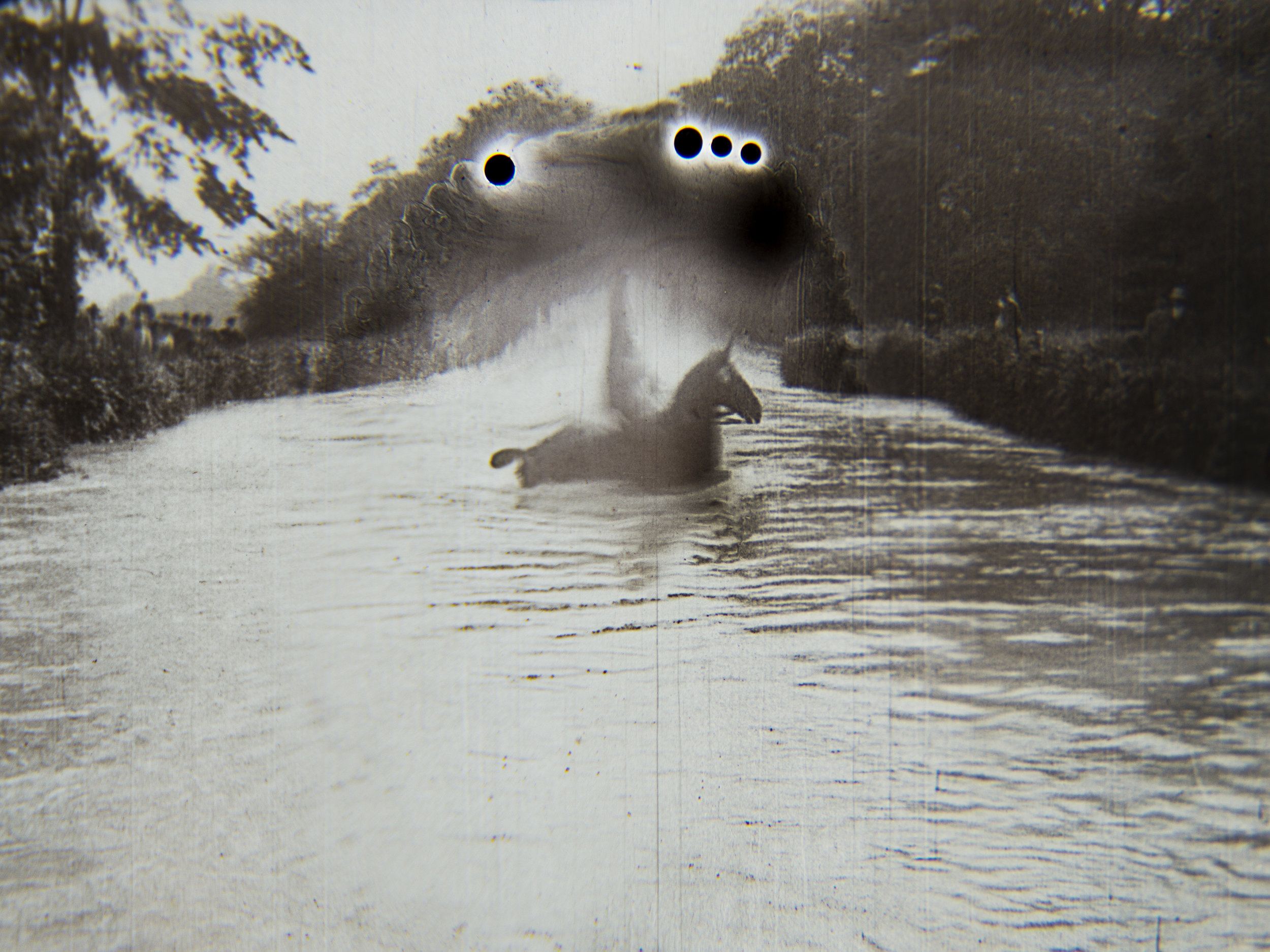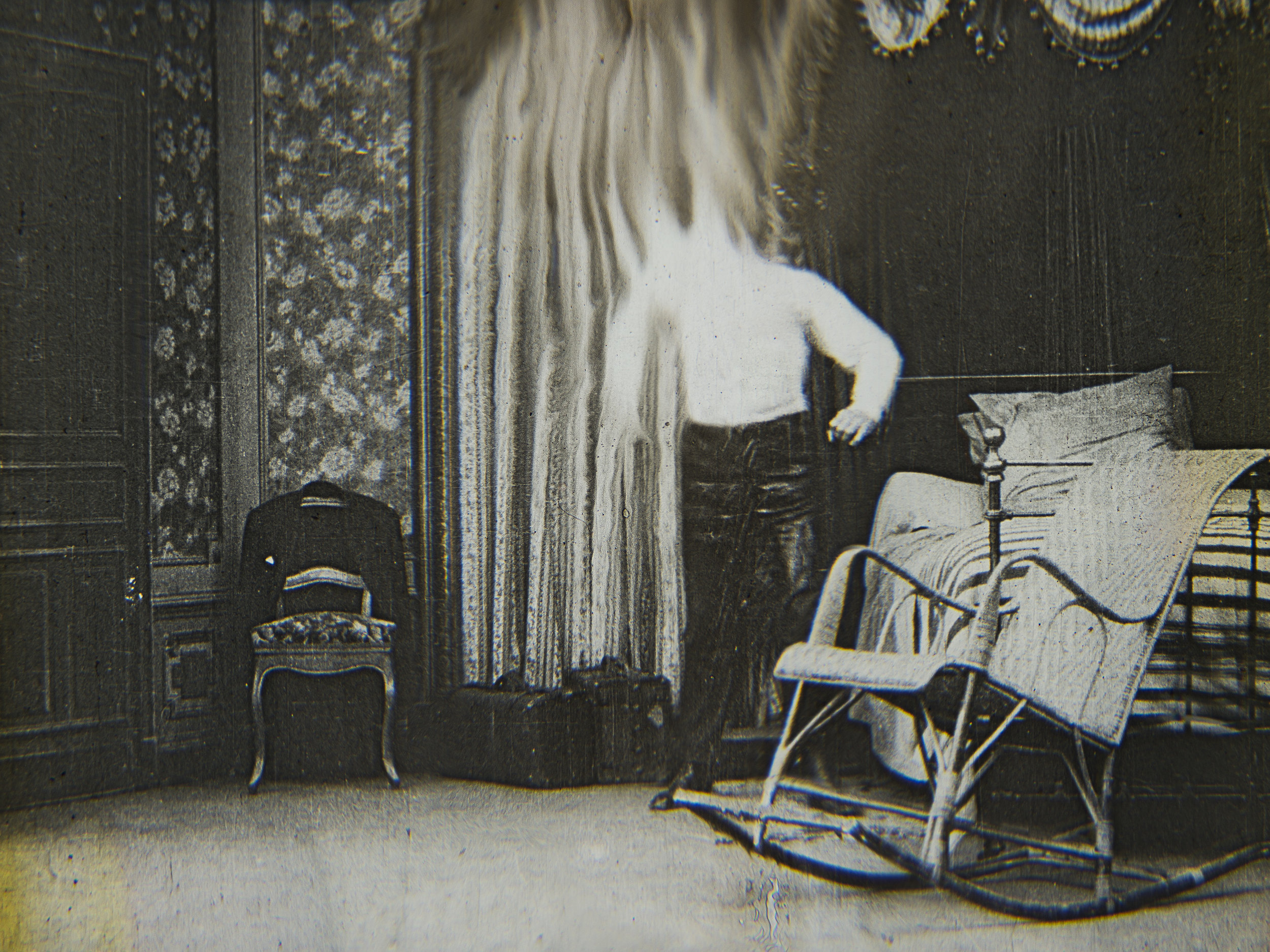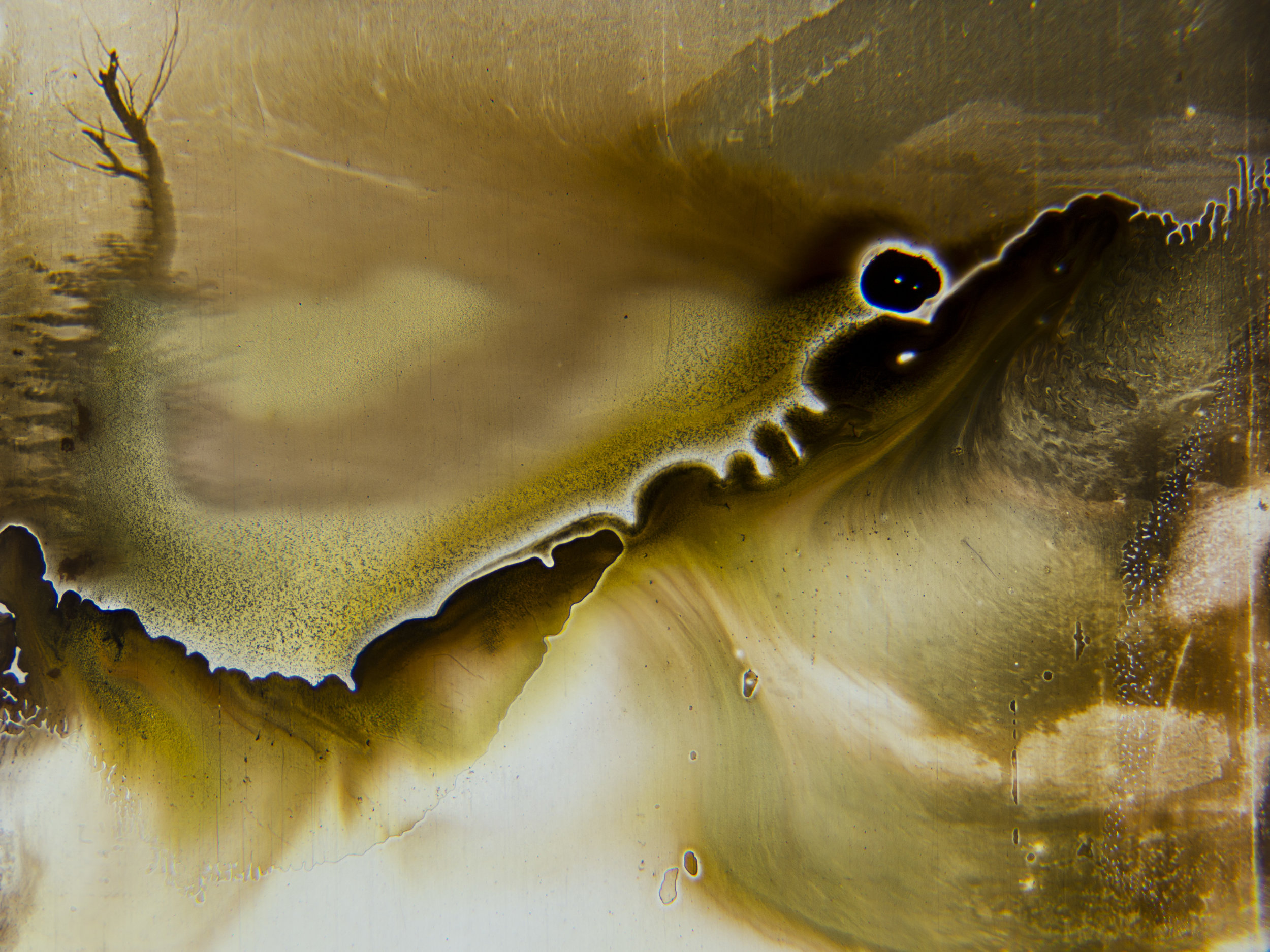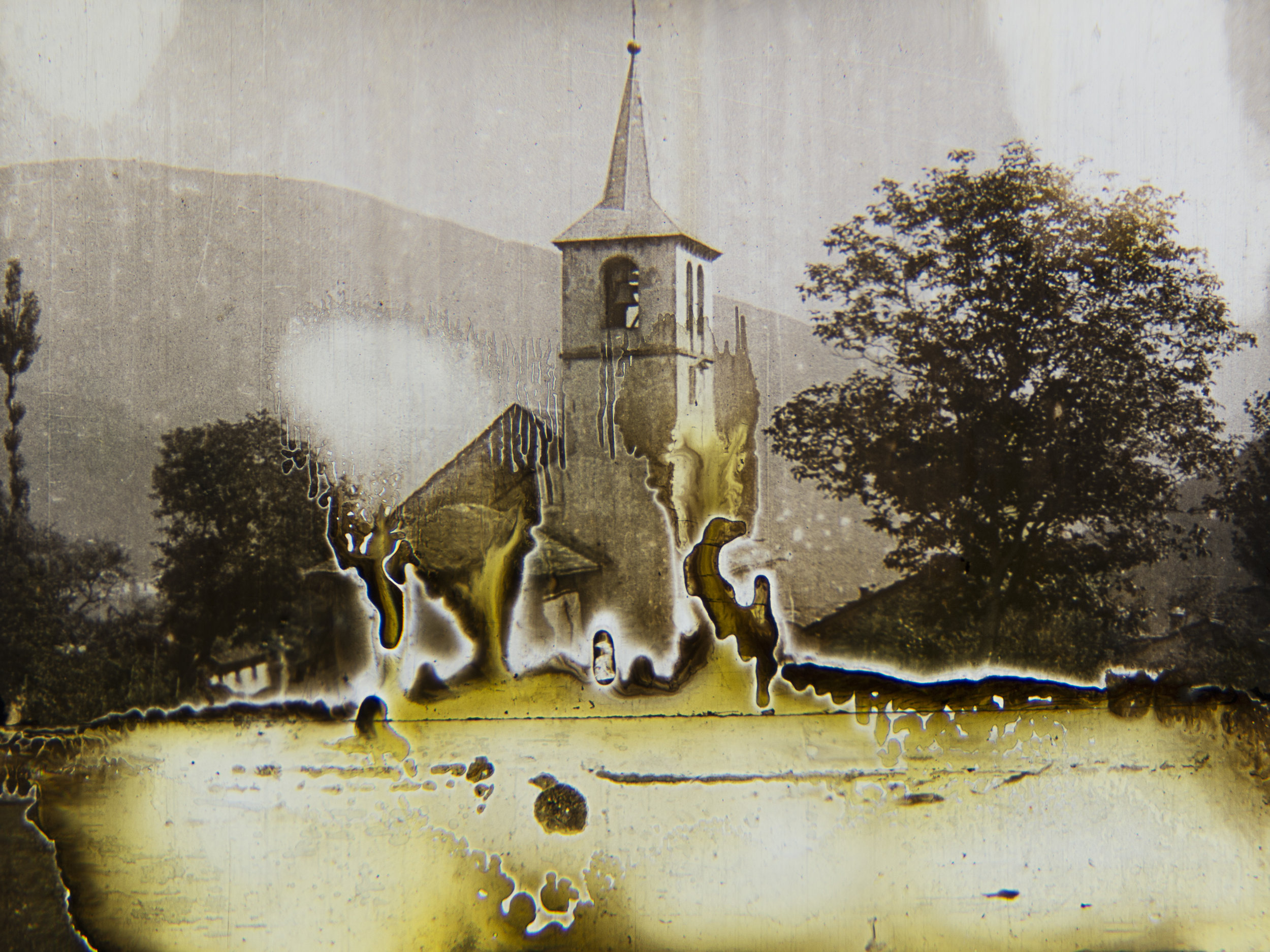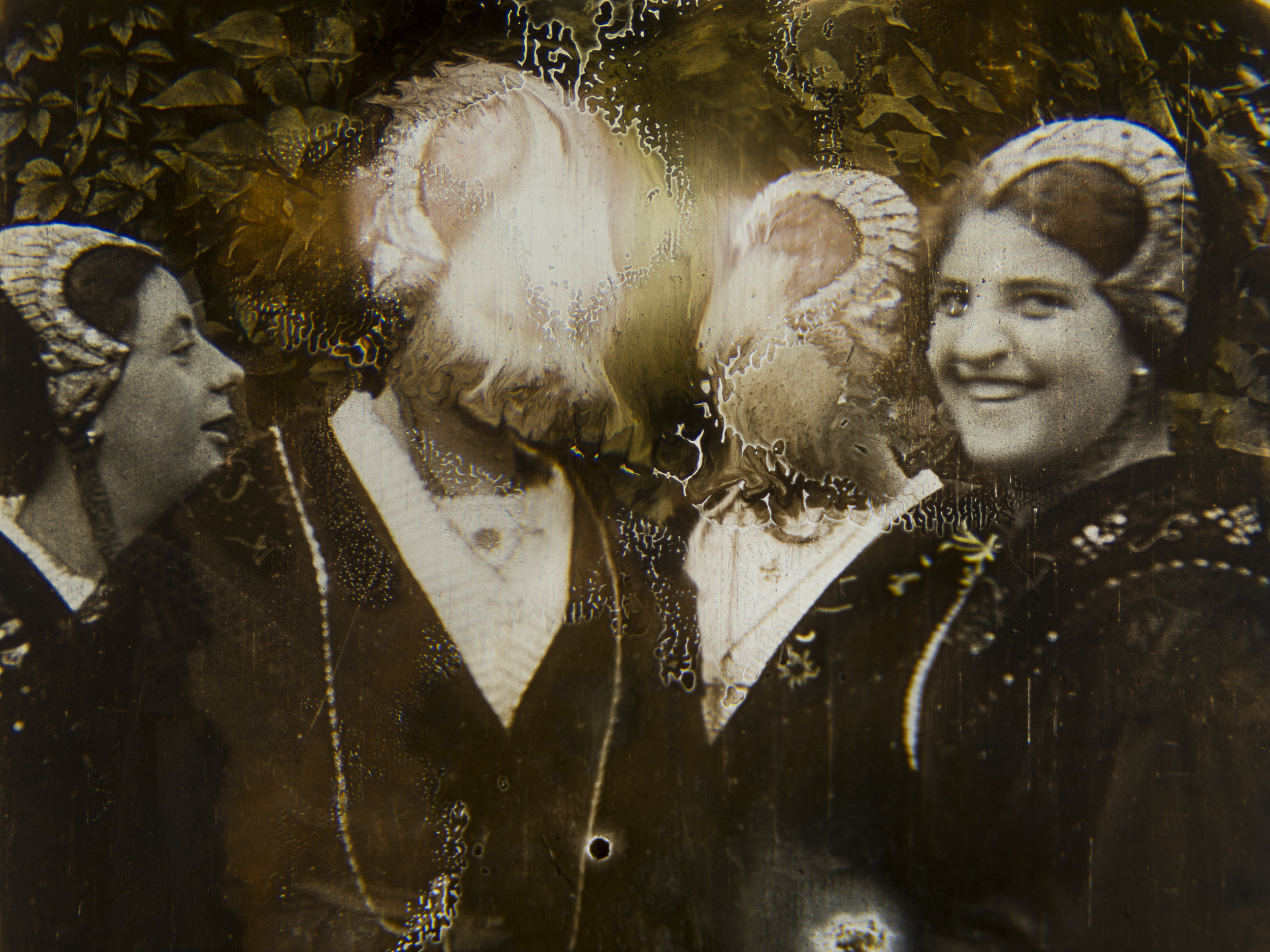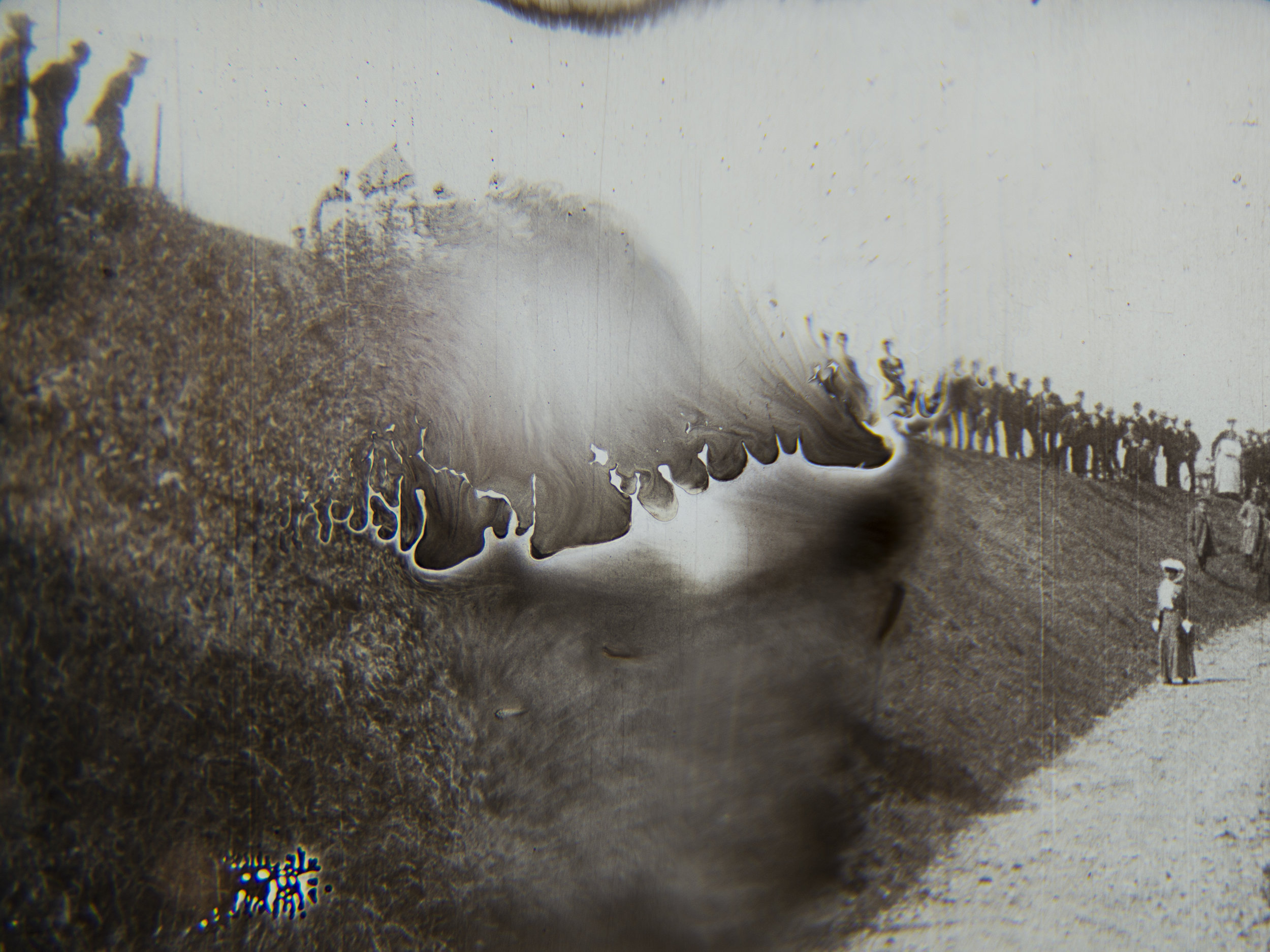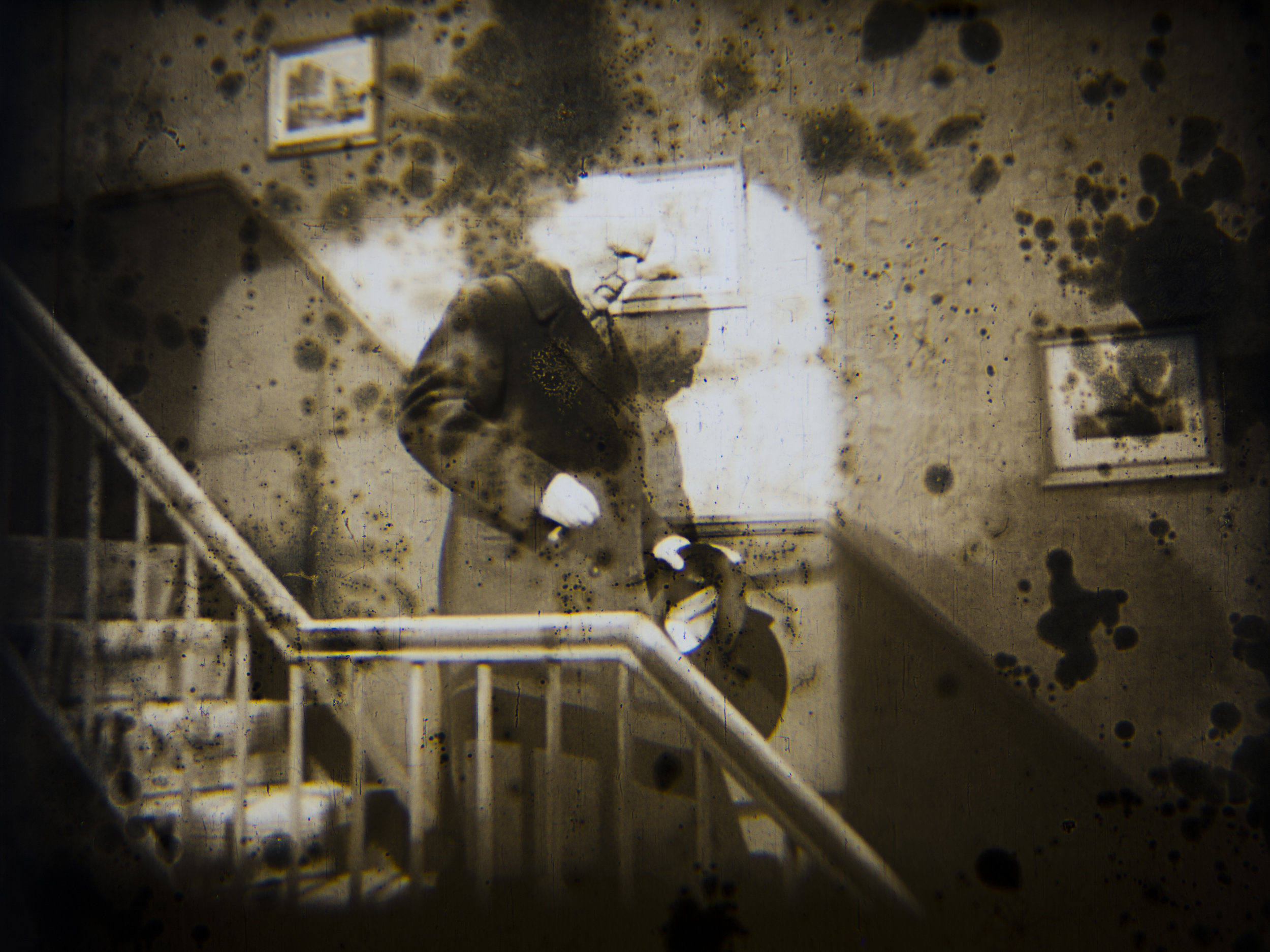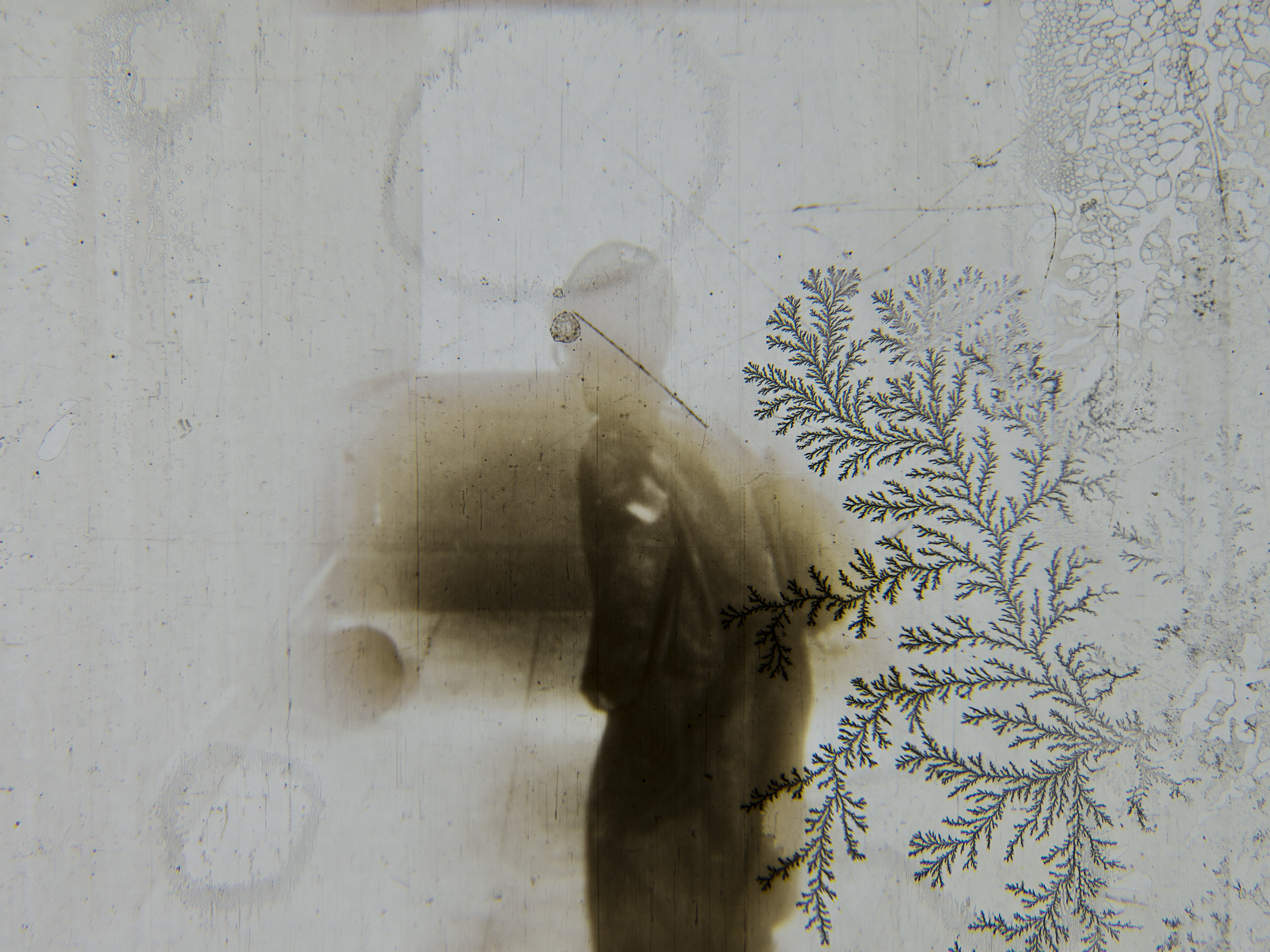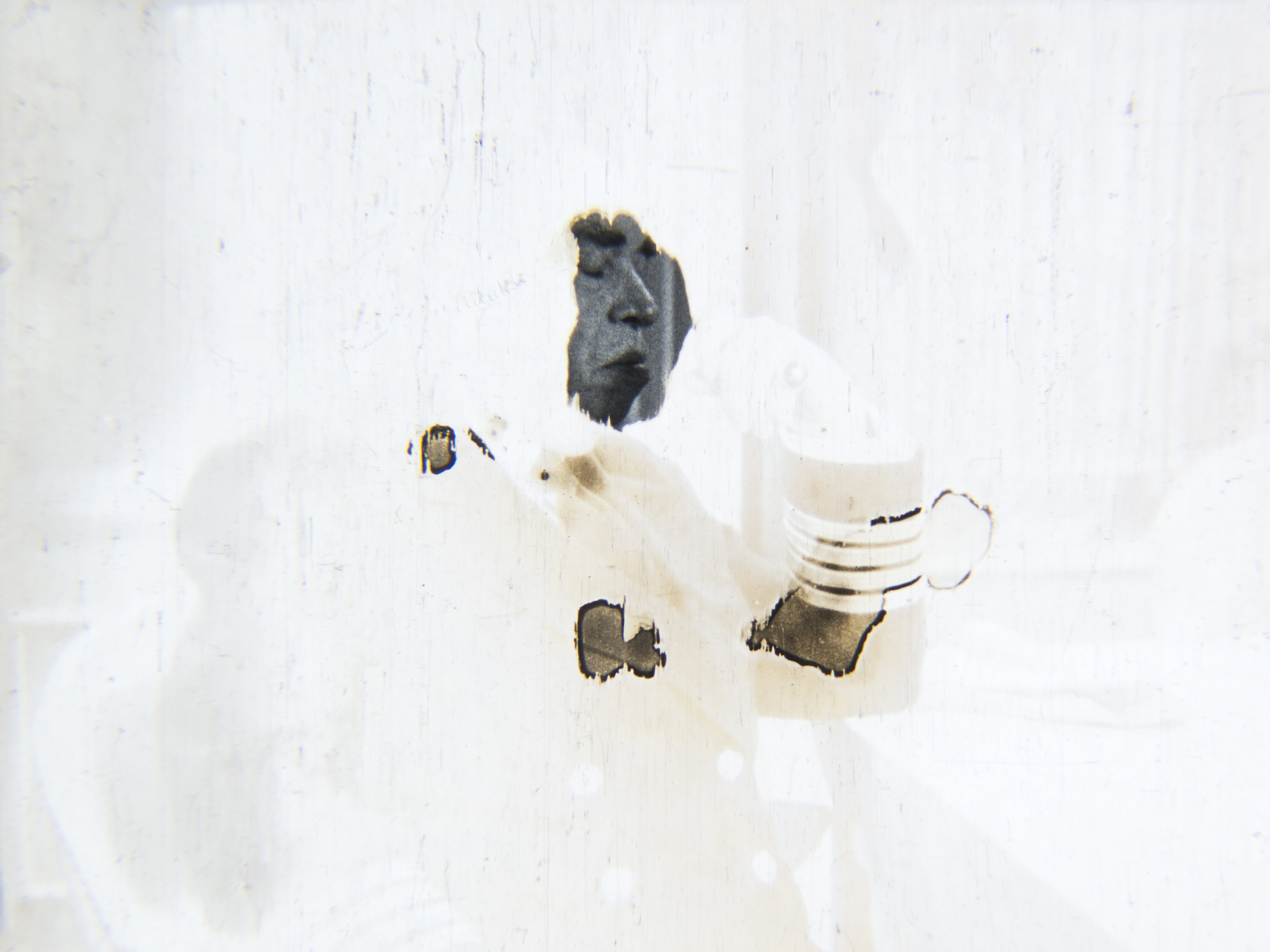Until 1951, all commercial cinematic film prints were made on a base of nitrocellulose, which is both highly flammable and chemically unstable. Due to the sensitive nature of this substance, film from that era is notoriously difficult to preserve, with various chemical reactions between the film and elements such as moisture, heat and acids in the natural environment causing color to fade, mold to grow, the film to shrink, or become brittle and finally turn to dust.
In this series of images, taken at the EYE Film Institute in Amsterdam, Kristina Petrošiutė manually photographed film that was intended for the trash, and in doing this documented the outcome of an interaction between two environments, the living and the recorded. She examined the decay caused by the collaboration between time, natural elements and the chemical base of the film. The series thus serves to record evidence of the way in which nature can poetically affect humanity even if on a small scale. The tables being turned on us with delicate spider-webs of mold, bubbles of black and flares of white distorting and disfiguring the film, letting us know that, in the scheme of things, time and chemistry will have the last word.
This project was made possible with help from Aleksas Gilaitis.
Many thanks to Atli Freyr Júlíusson for technical solutions.
More images upon request.
Prints available.
